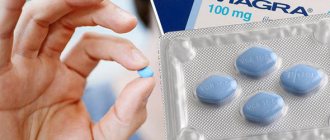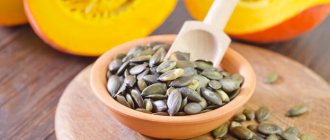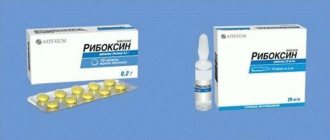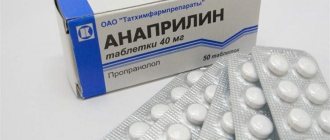October 10, 2021
Anemia is a decrease in hemoglobin content and/or a decrease in the number of red blood cells per unit volume of blood, leading to a decrease in oxygen supply to tissues
What is anemia?
Anemia is a decrease in hemoglobin content and/or a decrease in the number of red blood cells per unit volume of blood, leading to a decrease in the supply of oxygen to tissues. The diagnosis of anemia is made when hemoglobin decreases below 130 g/l in men and below 115 g/l in women.
In children, the age of the child is taken into account when diagnosing anemia. Anemia is classified depending on the cause and mechanisms of occurrence, as well as by color index. The severity depends on the decrease in hemoglobin levels in the blood and is divided into: mild, moderate and severe.
In the initial stages of the disease, a person feels constant fatigue and decreased performance. If you perform a laboratory blood test with these symptoms, it will determine a decrease in the level of hemoglobin and red blood cells. low hemoglobin is a very common ailment that occurs in both adults and children. This phenomenon can develop for a number of reasons and is a serious disease that must be treated. Otherwise, anemia can cause significant damage to health.
Symptoms of low hemoglobin
Although different types of anemia have different causes, their symptoms are very similar. Here are the frequent complaints of patients with low hemoglobin, that is, with iron deficiency anemia: fatigue, weakness, fatigue, dizziness, pallor, headache, feeling of cold, numbness of the limbs, shortness of breath, feeling of lack of air, increased heart rate, chest pain.
Most often, anemia manifests itself as pale skin, often with moderate yellowness, weakness and fatigue, and sometimes with decreased concentration. Shortness of breath and rapid heartbeat appear. You can also notice external signs of anemia: a person looks pale and lethargic, he exhibits some “oddities” in behavior: a desire arises to eat chalk, he begins to like unpleasant odors.
In older people, angina attacks may occur and become more frequent, and in young women, menstrual irregularities may occur. The usual explanations for this are: “tired”, “stress in the family and at work”, “lack of sleep”, “overworked”. Meanwhile, quite often these are signs of anemia.
Notice in time
With a mild degree of iron deficiency, rarely does anyone usually notice alarming symptoms of the disease; at this stage, only laboratory indicators can reveal anemia. More severe forms give a clear picture of oxygen starvation of the body. Patients with anemia complain of increased fatigue, dizziness, headaches (usually in the evening), poor appetite, shortness of breath during exercise, palpitations, fainting, flashing “spots” before the eyes, sleep disturbances, low-grade fever. They experience nervousness, tearfulness, decreased memory and attention, pale skin and mucous membranes, brittle nails, hair loss, formation of cracks in the skin and in the corners of the mouth, perversion of taste and olfactory sensations.
Disturbances affect the functioning of the digestive, cardiovascular and immune systems (the number of protective cells decreases), which contributes to a high infectious morbidity.
Based on the degree of decrease in hemoglobin, anemia is divided into three degrees of severity:
- light - 110-90 g/l;
- medium-heavy - 90-70 g/l;
- heavy - below 70 g/l.
Why does the body need hemoglobin?
Hemoglobin provides oxygen transport. In the capillaries of the lungs, a maximum of four oxygen molecules bind to one oxygen molecule and form oxyhemoglobin. Then, in the blood stream, red blood cells deliver this ligament to organs and tissues. Here, the oxygen necessary for oxidative processes is freed from bonding with hemoglobin.
Iron is necessary for the normal functioning of the human immune system. A lack of this microelement can lead to problems with potency in men and disrupt the menstrual cycle in women. Low hemoglobin levels can also warn of other serious diseases.
Signs of iron deficiency in the body may include loss of energy, depression, hair loss and dry skin, drowsiness and irritability. However, to determine true anemia and replenish iron deficiency, it is necessary to conduct a detailed blood test.
At risk are vegetarians and fans of strict diets, teenagers during hormonal changes in the body, and child athletes who do not take additional vitamin and mineral complexes. If pregnant women do not take special multivitamins, they are also at risk of developing anemia.
The doctor reminds you that you should not buy drugs to replenish hemoglobin and ferritin reserves at the pharmacy yourself. They are prescribed only by doctors. In addition, the effect of the drugs begins only after six months and therefore the course of treatment cannot be interrupted.
Detect Loss
There are many reasons for iron deficiency. Most often this is associated with chronic blood loss: monthly menstruation in women, gynecological diseases that occur with blood loss (ovarian dysfunction, uterine fibroids, endometriosis). Blood loss is often observed in diseases of the gastrointestinal tract (erosion of the esophagus and stomach, gastric or duodenal ulcers, Crohn's disease), as well as in diseases of the ENT organs, dental problems (periodontal disease), helminthiasis and oncology.
Article on the topic
Cold blood. Why we get chills The second most important factor in anemia is iron deficiency in food, which is facilitated by vegetarianism or an unbalanced diet with a predominance of refined foods.
Anemia also develops when iron absorption in the digestive tract is impaired due to gastroduodenitis, enteritis, enterocolitis, resection of the stomach or part of the small intestine, malabsorption syndrome.
Even high iron requirements at certain periods of life can lead to the development of anemia. For example, a period of intensive growth and puberty in children and adolescents, and in women - pregnancy and breastfeeding.
According to the World Health Organization, 25% of the world's population suffers from iron deficiency anemia. Women and children are at main risk for developing this disease.
Treatment and medications for low hemoglobin
Of course, treatment of anemia always includes the prescription of medications. It is impossible to eliminate iron deficiency anemia without iron supplements, only with a diet that includes a lot of iron. The absorption of iron from food is limited, its maximum is 2.5 mg/day. From medicinal preparations, iron is absorbed 15-20 times more.
However, the food must be complete and contain a sufficient amount of well-absorbed iron and protein. It is better to take iron supplements together with ascorbic acid. The latter improves the absorption of iron in the intestines. Since food significantly reduces the absorption of inorganic iron, taking the tablets before meals is more effective.
There are a wide variety of iron supplements. Experience has shown that organic salts of ferric iron and iron compounds with various organic radicals are most easily absorbed by the body and do not cause side effects. Such drugs are safer, they have less risk of overdose and poisoning than coarser inorganic salts. The gums and teeth do not darken, there is no heaviness in the stomach, and quite rarely there is a need to discontinue the drug.
Iron supplements
Now there are many medicines on the market that can be taken orally: coated tablets, for example Sorbifer Durules, chewable tablets Maltofer and Ferrum Lek, Actiferrin drops, Ferrum Lek and Actiferrin syrups for children, Actiferrin and Maltofer drops for infants, there are also injectable forms : Ferrum Lek, at the moment they are used strictly under the control of blood tests.
During pregnancy, it is especially necessary to carefully monitor the hemoglobin level in the blood. For pregnant and lactating women, there are special forms: chewable tablets Maltofer Fol, long-acting tablets coated with Tardiferon, which contain not only iron salts, but also folic acid, which is necessary during pregnancy in higher doses. Depending on the age of the child, a drop form or syrup (Aktiferrin, Maltofer, Ferrum lek) is selected and treatment is carried out.
Prevention of anemia - which foods contain iron
My children and I are vegetarians. From what plant products can we get iron to prevent anemia?
In fact, it is easier for meat eaters to maintain optimal iron levels in the body. And not because vegetarian food is poor for them. On the contrary, there is a lot of iron in plant products: buckwheat, dried fruits, beans, parsley, oatmeal, millet, dried mushrooms, honey, seaweed. However, such iron (trivalent) is poorly absorbed. First, it needs to be converted in the body into a divalent form (this is exactly the iron found in meat). And for those who have reduced stomach acidity (for example, anacid gastritis), iron from plant foods is not absorbed at all.
In addition, when consuming foods that are sources of iron, it is important to avoid simultaneous consumption of foods that impair the absorption of this mineral. These are, first of all, dairy products, strong tea and coffee - calcium and tannins interfere with absorption. But cocoa or a little dry white wine, on the contrary, helps. But the easiest way to keep iron under control is by eating meat. And as a side dish, choose vegetables rich in vitamin C. Ascorbic acid increases iron absorption.
For vegetarians, it is better to work with your doctor to select the optimal form and dose of iron supplements to prevent anemia. You should not take iron supplements uncontrollably. Iron overload leads to congestive heart failure, liver and kidney damage. In addition, there are diseases for which iron intake is undesirable. This is inflammation of the pancreas, stomach ulcers, intestinal diseases, exacerbation of infections.
It is especially important to monitor and, if necessary, regulate iron levels for expectant mothers. It is necessary to respond urgently if signs of anemia appear during pregnancy. This will prevent the development of gestosis, premature birth, malformations in the fetus and many other problems for the mother and newborn.
Prevention to be
Of course, with a diagnosis of iron deficiency anemia, a person must adhere to a rational diet, but, according to medical research, no diet can completely compensate for the microelement deficiency. This is possible with drugs containing a high content of ferric iron (Fe III).
Iron supplements are prescribed only by a doctor, focusing on the individual characteristics of the course of anemia. The medicine is prescribed for a fairly long period, since the hemoglobin level increases only at the end of the third week of such therapy, so it is extremely important to be patient and persistently complete the course of treatment.
After all, this is the only way to get rid of the oppressive state of iron deficiency, avoid the development of dangerous complications and maintain your newly acquired “iron” health for many years.
As an advertisement
Anemia Treatment Methods
There are three ways to eliminate anemia in cancer patients: transfusion of red blood cells, administration of erythropoietin, and administration of drugs containing iron. In some cases, a combination of these methods may be used.
Red blood cell transfusion for anemia
Transfusion of red blood cells is the most effective method with which you can quickly compensate for the deficiency of red blood cells and restore the level of hemoglobin and hematocrit. However, without eliminating the cause of anemia, this method will only give a temporary effect. Therefore, red blood cell transfusion is not an alternative to other methods and is used only if indicated. One of them is a decrease in hemoglobin levels below 90 g/l. A transfusion is performed when the patient develops characteristic signs of anemia, including:
- Dizziness.
- Loss of consciousness.
- Tachycardia.
- Fast fatiguability.
- Chest pain.
- Dyspnea.
This anemia treatment may also be used in patients who have undergone chemotherapy or radiation therapy and have a rapid decrease in their hemoglobin or red blood cell levels.
Use of erythropoiesis stimulants
Stimulators of erythropoiesis in anemia increase the concentration of hemoglobin and red blood cells by increasing their formation in the bone marrow. When combined with blood transfusions, this method shows very good results, but it also has a number of disadvantages regarding complications. In particular, the use of erythropoiesis stimulants to treat anemia increases the risk of thrombotic complications, which is already high in cancer patients. According to data obtained from several scientific studies, this risk increases by 1.4-1.7 times.
Recently, the issue of the effect of erythropoiesis stimulants on the survival of cancer patients has been discussed. In particular, experts have found that the use of drugs of this group in the treatment of anemia in patients with advanced tumors of the head and neck, cervix, breast and other diagnoses reduces life expectancy by 10-17%. In this regard, experts suggest adhering to the following rules:
- If the hemoglobin level is less than 100 g/l and the patient is being treated with chemotherapy, then erythropoiesis stimulants can be prescribed to correct anemia and prevent further decline in levels.
- If the hemoglobin level drops to 100 g/l or lower, but chemotherapy is not carried out, then the use of erythropoiesis stimulants is not recommended due to the increased risk of complications and reduced life expectancy.
- In all other cases, erythropoiesis stimulants should be used with caution to treat anemia in cancer patients.
Also, throughout the entire treatment period, it is important to monitor the dynamics of laboratory parameters and, as hemoglobin levels increase, gradually reduce the dosage of erythropoiesis stimulants.
Iron supplements in the treatment of anemia
Iron supplements are used to treat iron deficiency anemia, which is detected in 30-60% of cancer patients. In this case, a decrease in iron levels can be associated both with the tumor process itself or the treatment performed, and with other factors. For example, when erythropoiesis stimulants are prescribed, the existing supply of iron in the body becomes insufficient to cover the need that arises as a result of the active synthesis of hemoglobin in the bone marrow.
Both intravenous and oral medications can be used to treat anemia. The second option is more convenient for the patient, since the tablets are easier to take, but this form acts more slowly and more often leads to gastrointestinal complications. Intravenous administration allows you to achieve a quick effect, which is important during chemotherapy.
Thus, for the treatment of anemia, modern oncology can offer various methods that affect the mechanisms of development of this symptom. The exact treatment plan is selected individually for each patient, taking into account laboratory blood values, features of treatment of the underlying disease and other parameters.
Diagnosis of hypochromic anemia
To make a diagnosis, the doctor examines the patient and listens to his complaints. Without fail, the doctor clarifies whether immediate blood relatives suffered from anemia. The next stage of diagnosis is laboratory tests. Be sure to donate blood for analysis to calculate the level of red blood cells and hemoglobin in it.
| Age and gender | Normal hemoglobin level in g/l | Deviations from the norm in g/l | |
| Male | 130-160 | Less than 130 | |
| Female | 120-150 | Less than 120 | |
| Pregnant women | 110-150 | Less than 10 | |
| Children under five years old | Newborns | 145 | Less than 145 |
| 1-14 days | 130 | Less than 130 | |
| 15-28 days | 120 | Less than 120 | |
| 1-5 years | 110 | Less than 110 | |
One red blood cell should contain 0.85-1.15 hemoglobin. Hypochromic anemia is characterized by a decrease in this indicator to less than 0.85.
To clarify the diagnosis, you will need to go through a number of additional diagnostic procedures, which also allow you to find out the cause of anemia:
- Submission of stool to detect hidden blood in it.
- Passing FGDS to examine the mucous membrane of the stomach and duodenum.
- A colonoscopy involves examining the intestines.
- Submission of urine for analysis.
- Ultrasound examination of the kidneys.
- X-ray examination of the lungs.
- All women must see a gynecologist.
- A bone marrow puncture is performed.
- A blood test is performed to determine serum iron levels.
Treatment of anemia using traditional methods
Some patients, for various reasons, refuse to take the medications described above and turn to traditional medicine. Of course, some plants or foods can have a stimulating effect on the hematopoietic system. However, given the underlying diagnosis and severity of anemia, this action is extremely insufficient to restore hemoglobin levels and oxygen function of the blood. As a result, the effectiveness of antitumor treatment decreases, the prognosis worsens and the risk of an unfavorable outcome significantly increases. It is impossible to eliminate severe anemia at home using traditional methods. This should be done by doctors of the appropriate profile, who have modern medications at their disposal.
Book a consultation 24 hours a day
+7+7+78
What is ZhDA
IDA is a condition in which the body is deficient in iron, which causes a decrease in the number of red blood cells. As a result, various disturbances in the functioning of the body develop, primarily associated with inadequate gas exchange. Therefore, iron deficiency anemia is characterized by weakness, dizziness and even loss of consciousness, as well as a number of other changes in the condition. This may be a consequence of both insufficient intake of iron from food, and a violation of its absorption in the body or excessive consumption.
Therefore, iron deficiency anemia cannot be a primary disease. It is always a consequence of the occurrence of certain violations. At the same time, it accounts for about 80% of all anemia, which requires careful attention to this problem and its detailed consideration.
WHO statistics show that more than 2 billion people worldwide suffer from iron deficiency anemia. But this is only according to official data. In reality, their number is significantly higher.
Normally, iron enters the body along with plant and animal foods. In plant sources it is found in the form of ferric iron, and in animal sources - ferrous. These forms of iron differ in different rates and degrees of absorption. Iron from animal food sources, or heme, is easily absorbed. But trivalent or non-heme iron obtained from plant foods must first be transformed under the action of hydrochloric acid of the stomach into divalent, and after entering the initial parts of the small intestine with the food bolus, it must again transform into the trivalent form.
Some of the iron accumulates in the mucous membrane of the small intestine, and the rest is absorbed into the blood. Moreover, no more than 2.5 mg of iron can be absorbed per day. In the blood it is bound by the protein transferrin, the production of which is responsible for the liver. The amount of iron absorbed and deposited in the intestines is regulated depending on its level in the body. If excess iron comes from food, it is retained in a larger volume in the cells of the mucous membrane of the small intestine, which are subsequently naturally exfoliated and excreted along with feces.
Iron absorbed into the bloodstream is transported by transferrin in two main directions:
- through the portal vein it enters the liver, where it is deposited in the form of the protein ferritin;
- is delivered to red bone marrow cells, where it is used for the synthesis of hemoglobin and takes part in tissue redox reactions.
If disturbances occur at any of these stages, the body develops iron deficiency. Thus, with a decrease in the acidity of gastric juice, which may be a consequence of atrophic gastritis, the use of antacids, or gastric resection, the body’s ability to convert ferrous iron into ferric iron decreases. This means that it cannot be fully absorbed and subsequently participate in biochemical transformations.
With the development of chronic pathologies affecting the intestinal mucous membranes, their ability to absorb iron also decreases. Therefore, it cannot enter the blood in sufficient quantities.
If the binding process of iron by transferrin is disrupted, it cannot be transported effectively throughout the body. Therefore, it does not enter the red brain cells in the required quantities.
In any of these cases, the consequence is a decrease in the ability to form hemoglobin and other iron-containing proteins, i.e., the development of iron deficiency anemia and other metabolic disorders. As a result of a decrease in hemoglobin production, the resulting young red blood cells are smaller in size, and their total number decreases.
Iron in the body
In the human body, iron is mainly present in the form of hemoglobin, which contains it. Hemoglobin is a protein with a quaternary structure, responsible for binding oxygen entering the blood during inhalation and transporting it to every cell of the body. Having given them oxygen, it takes carbon dioxide and, entering the lungs with the bloodstream, gives it away, again becoming saturated with oxygen. As a result, during exhalation, a person exhales metabolic products.
In this case, the binding of oxygen and its transportation is ensured precisely by the non-protein part of hemoglobin, or rather by the iron atom directly included in its composition. Therefore, maintaining its amount in the body at the proper level is extremely important.
Hemoglobin is carried by red blood cells and accounts for about 95% of the total intracellular space of each red blood cell. Red blood cells are the most numerous group of blood cells and have a characteristic biconcave disc shape. It is this form of red blood cell that ensures the most efficient performance of the gas exchange function in the body. Therefore, when, due to heredity or the action of other factors, human red blood cells acquire a different shape, for example, a sickle (sickle cell anemia), they are no longer able to maintain gas exchange at the proper level.
But in addition to ensuring the transport of oxygen and carbon dioxide in the body by iron as part of hemoglobin, i.e., performing the function of gas exchange, it is also necessary for:
- synthesis of thyroid hormones;
- maintaining immunity;
- the occurrence of a number of metabolic processes, cell division;
- myelination of nerve fibers (formation of a protective sheath around the nerve);
- DNA products;
- proper breathing, maintaining muscle tone;
- proper functioning of the brain.
The adult body contains an average of 4 g of iron, which depends on gender and age. More than half is concentrated in hemoglobin, 27% is contained in muscles in the form of myoglobin, and 7-8% is deposited in the liver.
Iron is stored or deposited by a specific protein called ferritin. Each ferritin molecule is capable of holding 3000 iron atoms. If there is insufficient supply from the outside, the body begins to use ferritin to meet its needs. But with prolonged iron deficiency, ferritin reserves are depleted, which leads to disruption of metabolic processes and iron deficiency anemia.







